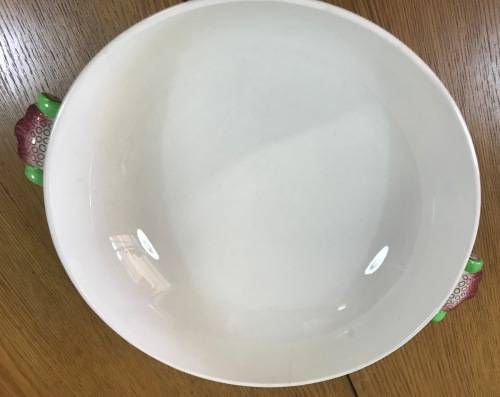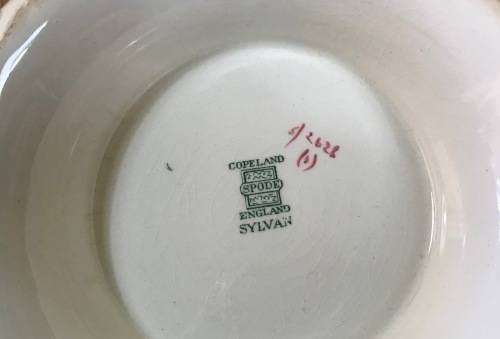



















COPELAND SPODE=SYLVAN=ENGLAND=TUREEN and LID=FLOWERS and LEAVES=FLORAL=Please read notes......
Check my rate
| Main centres: | 1-3 business days |
| Regional areas: | 3-4 business days |
| Remote areas: | 3-5 business days |




















| Main centres: | 1-3 business days |
| Regional areas: | 3-4 business days |
| Remote areas: | 3-5 business days |
CPOELAND SPODE PORCELAIN TUREEN & LID
Sylvan Pattern.
Marked on the base with official Spode Mark.
MADE IN ENGLAND
CONDITION = Has a small hairline and some staining / crazing as shown = Reasonable.
OVERALL DIMENSIONS:
270mm handle to handle = 145mm height to finial = 225mm widest.
Some History ................. Around 1880, the English added ground bone ash from farm animals to the wet clay, making the ceramics lighter in weight, more translucent, and stronger (according to Antiques 101 by Frank Farmer Loomis IV). By 1842, the Spode factory—an enterprise owned by Josiah Spode II and William Copeland—along with Coalport, Wedgwood, Worcester, and a number of other companies, became known for making “bone china.”
History of Copeland Spode China
Josiah Spode apprenticed as a potter in the mid-1700s. By 1754, he went to work for William Banks in Stoke-on-Trent, in Staffordshire, England. Later, he started his own pottery business, making cream-colored earthenware and whiteware with blueprints. In 1770, Spode became the master of Banks’ factory and purchased the business in 1776 (according to Warman’s Antiques & Collectibles by Noah Fleisher).
“Spode pioneered the use of steam-powered, pottery-making machinery and mastered the art of transfer printing from copper plates,” says Fleisher. “Spode opened a London shop in 1778 and sent William Copeland there in about 1784 ... At the turn of the eighteenth century, Spode introduced bone china ... [and] in 1805, Josiah Spode II and William Copeland entered into a partnership for the London business. By the early 1830s, Copeland fully acquired the Spode operations in London and took over the Stoke plant operations until his death in 1868, when he passed the business onto his heirs. The factory was modernized in 1923, which included the addition of electric power.